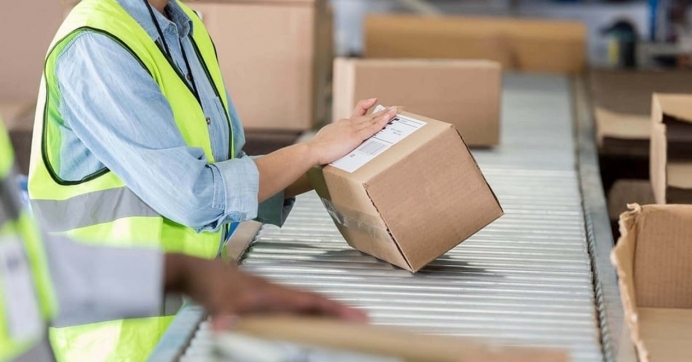Top supply chain trends to watch in 2023
More buyers will likely opt for distributed sourcing, flag off a pay-for-play procurement model while a shift towards green procurement will be seen in the industry, finds BuyHive's paper

The global supply chain and sourcing functions will accelerate their risk mitigation as a direct response to a series of adverse events witnessed over the last three years, opting for distributed and small-batch manufacturing, according to global B2B sourcing platform BuyHive's latest paper titled 'Top Supply Chain Trends to Watch in 2023'.
For large buying houses, retail chains, and downstream manufacturers around the world, BuyHive has enumerated seven key trends to look out for and adapt to in 2023. These trends are distilled from BuyHive's conversations with its global network of suppliers and buyers, including some of the world's largest buyers and manufacturers in categories like textiles and apparel, consumer electronics, and fashion accessories among others.
BuyHive is a B2B tech-enabled sourcing platform that uses trust, accountability, and technological efficiency to differentiate its procurement solutions, including a network of specialized sourcing experts and a contract manufacturing solution to help global buyers identify and work with suitable suppliers from around the world.
Minesh Pore, Co-founder, and CEO of BuyHive, said, "The pressures to deal with increased geopolitical risks will force a greater number of buyers to opt for distributed sourcing with smaller manufacturers spread across regions or countries, in turn creating a marked preference for pay-for-play procurement models in 2023 and beyond. Simultaneously, there will be a decisive shift towards green procurement with a clear focus on minimizing net carbon impact throughout the supply chain."
BuyHive's top supply chain trends for 2023 are:
1. Small-sized retailers will dominate the D2C markets
The continuing rise in popularity of third-party e-commerce platforms or marketplaces will work to the advantage of small-sized retailers who will also dominate the D2C industry in 2023 and beyond. The most successful online retailers and D2C brands will share certain common traits including small size, high degree of expertise in using SEO and SEM tools, and exceptional digital marketing and brand-building skills. Many of these retailers will operate with lean sourcing teams that outsource the majority of their procurement operations, thus creating opportunities for a completely new gamut of procurement tools.
2. Pay-for-play procurement models will grow
The growing importance of smaller retailers will further support the growth of new digital procurement models, including sourcing-as-a-service, provided by large and established B2B marketplaces as well as emerging sourcing platforms. Many large buyers will also be attracted to these new models for the latter's promise of reduced costs and increased efficiencies.
3. Decentralised, small-batch manufacturing will gain prominence
To meet the customization demands of a huge number of small D2C brands as well as online retailers, a growing number of manufacturers will begin readjusting their operations to support small-batch manufacturing starting in 2023. Large buyers on the other hand will increasingly opt to hedge their supply chain risks by choosing to work with multiple suppliers based in different geographies, vis-a-vis working with a single, large supplier.
4. Risk mitigation will drive technology adoption
A series of supply chain shocks over the last three years have forced global procurement teams to accelerate their adoption of modern tech tools to enhance supply chain visibility and mitigate any disruption risks. Tech adoption will reach a pivotal point in 2023 with a key focus on integrating disparate systems and databases of multiple stakeholders in the supply chain as well as using IoT-enabled real-time tracking, with the end-goal of achieving end-to-end transparency throughout the chain.
5. Price flexibilities will decline
2023 will also see the domination of sellers in the market across all major categories. As a result, negotiation terms will be relatively less flexible and buyers' margins will feel the crunch. The twin-pronged fangs of recession and inflation shall show up in major western economies thus reducing demand, and buying power among larger retailers, further reducing the latter's bargaining power in the supply chain.
6. Geopolitical drifts will push supply chains to be reorganized
The ever-changing geopolitical environment and the still-evolving trade dynamics between major economies will have a significant impact on global sourcing in 2023. Some of the new treaties as well as recent multilateral trade agreements will start weighing on supply chains in 2023, which in turn is going to push retailers to quickly rearrange their sourcing destinations.
7. Supply chains will face greater pressures to go green
Stronger push from consumers and competitors on one hand, and tightening environmental regulations around the world on the other will force a growing number of buyers to assess the net carbon impact of their supply chains in 2023 and beyond. These pressures will further force the buyers to introduce sustainability as an important decision variable in their future procurement strategies.
- global supply chainretail chainstextilesapparelconsumer electronicsfashion accessoriescontract manufacturingdistributed sourcinggreen procurementnet carbon impactsupply chain trendse-commerce platformsprocurement toolsdigital procurement modelssourcing-as-a-serviceB2B marketplacessourcing platformssmall-batch manufacturingD2C brandsonline retailersRisk mitigationprocurement teamstech toolssupply chain visibilitydisruption risksTech adoptionsupply chainIoTreal-time trackingsourcing destinationssustainabilityprocurement strategies



